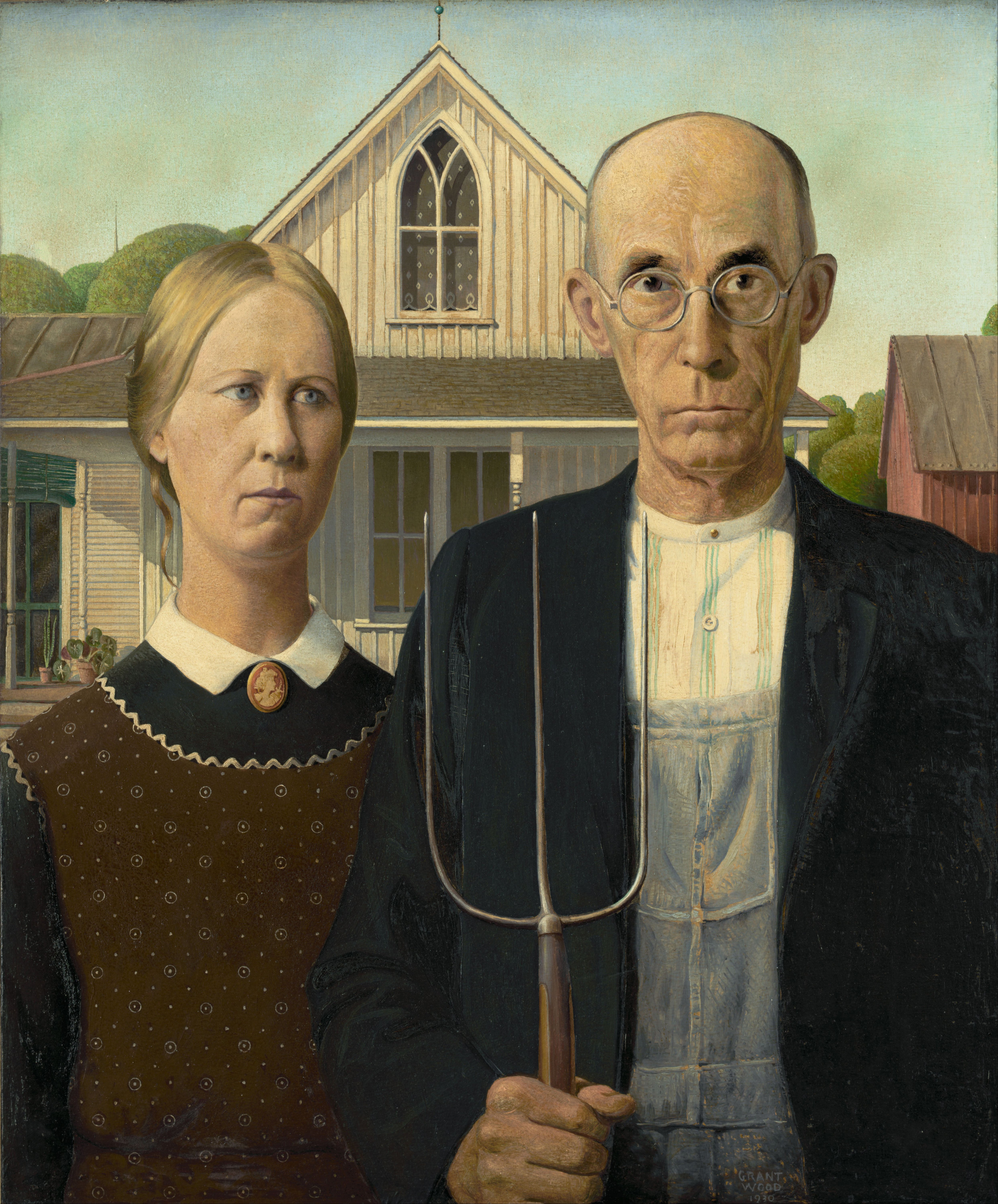Wood, Grant (1891-1942), was an American painter and printmaker known for his images of the rural Midwest. With Thomas Hart Benton and John Steuart Curry, Wood was a founder and leading figure in the regionalism movement that was prominent in American art during the 1930’s. Wood primarily portrayed the people and landscape of Iowa, where he lived and taught most of his life. Wood believed that artists should remain in their home communities and paint from personal experience based on their local and national heritage.

Wood’s most famous painting is American Gothic (1930), which portrays a Midwestern farmer and his daughter in front of their home. In The Midnight Ride of Paul Revere (1931), Wood made good-hearted fun of Revere’s legendary ride by moving it from New England to a hilly Iowa landscape. Arbor Day (1932) praises the values of domestic life in rural America.

Wood’s paintings show the influence of German and Flemish art of the 1400’s and 1500’s in their realism, precise details, and enamellike surfaces. His compositions are based on simple geometric shapes with sharp contours rendered in bright but earthy colors. Wood was born on Feb. 13, 1891, near Anamosa, Iowa. He died on Feb. 12, 1942.
